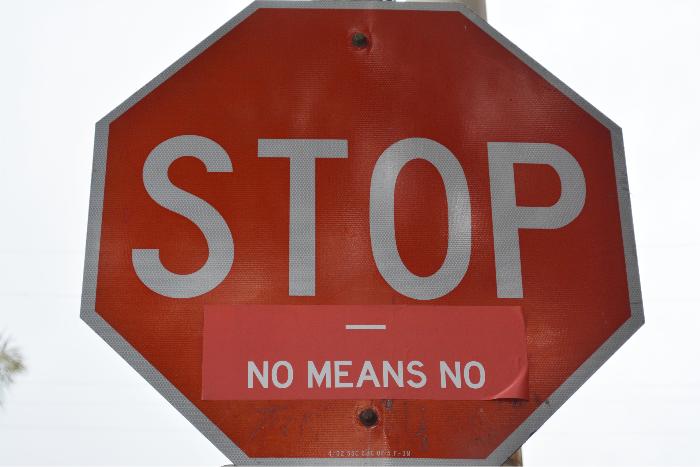Chin Priscilla
Are you caught in a never-ending cycle of drama and conflict? Do you find yourself repeatedly getting drawn into toxic relationships? If so, you may be trapped in what is known as the drama triangle. The drama triangle is a familiar pattern that many people find themselves entangled in, often without even realizing it. In this article, we will explore the concept of the drama triangle and how it can impact your personal and professional relationships.
What is the Drama Triangle?
The Karpman Drama Triangle, named after its creator Stephen Karpman, is a social model that describes three roles people often play in conflict situations: the victim, the rescuer, and the persecutor. These roles are not fixed, and individuals can switch between them depending on the circumstances. The victim is the one who feels helpless and oppressed, seeking sympathy and support from others. The rescuer is the one who tries to save the victim, often taking on their problems as their own. And finally, the persecutor is the one who blames and criticizes others, taking on a controlling and aggressive stance.

How does the Drama Triangle work? The cycle of the Karpman Drama Triangle
The Drama Triangle is a cycle that perpetuates conflict and negativity within relationships. The victim seeks validation and support, which attracts the rescuer. The rescuer enables the victim’s behavior and attempts to fix their problems. However, over time, the rescuer may become frustrated and shift into the persecutor role, blaming the victim for their own inability to change. This creates a power struggle and reinforces the victim’s role.
Breaking free from the Drama Triangle requires recognizing the signs and consciously choosing to break the patterns. It’s important to understand that no one role is solely responsible for the dynamic – each role feeds into the others. By taking responsibility for our own behavior and choices, we can begin to shift away from the Drama Triangle and towards healthier relationships.
Understanding the Roles in the Drama Triangle
The drama triangle, also known as the Karpman Triangle, is a social model that explains the destructive dynamics that often occur in relationships. It consists of three roles: the victim, the persecutor, and the rescuer. Each role feeds off the others, creating a cycle of drama and dysfunction.
The Victim Role in the Karpman Drama Triangle

In the drama triangle, the victim is the person who feels helpless and oppressed. They believe they have no power or control over their situation and often seek sympathy and validation from others. The victim tends to blame others for their problems and may tend to play the role of a martyr. They often attract rescuers who enable their victim mentality.
The drama triangle can start with someone assuming the role of the victim. Victims tend to believe they are powerless and others are responsible for their problems. They may seek sympathy and support from others, often playing the victim card to manipulate and control the situation. For example, imagine a person who constantly complains about their job but takes no action to improve their situation. They may hope that someone will come to their rescue and solve all their problems.
Another example of the victim role is someone constantly seeking validation from others. They may portray themselves as helpless and incapable of making decisions, relying on others to give them a sense of worth and direction. This can create a cycle of dependency and prevent personal growth.
Victims in the Drama Triangle tend to think:
- “I’m powerless in this situation.”
- “There’s nothing I can do to change this.”
- “Nothing good ever happens to me.”
- “Other people have it out for me.”
- “Everything is stacked against me.”
- “People don’t understand my struggles.”
- “Life is unfair to me.”
- “I don’t get the support or help I need.”
- “People should feel sorry for my plight.”
- “It’s hopeless to even try improving things.”
- “Other people make success/happiness impossible for me.”
- “My problems define me.”
Just because someone is in the victim role, it does not mean that their traumas and pains are invalid.
Identifying as a victim in the drama triangle does not invalidate or diminish someone’s real traumatic experiences. Those experiences and feelings of suffering are absolutely real and valid.
The drama triangle refers more to an unhealthy pattern of relating to one’s wounds in ways that hinder growth and empowerment. Being a victim is an identity and lens someone adopts, not an objective truth.
Someone with tremendous trauma can get stuck relating to their pain from victimhood rather than processing it into post-traumatic growth. The goal is not to deny the trauma but to encourage more active coping, agency, resilience, accountability, and integration.
So while the trauma itself is not erased if someone is called out for a victim mentality, there are likely better ways for them to heal into a survivor mentality. This allows moving forward while still honoring the wounds of the past. Genuine supporters should acknowledge real trauma while gently encouraging responsibility and empowerment.
Want to escape the Drama Triangle and build healthier relationships?
Schedule a consultation with our vetted therapists.
- Limited weekday evenings available right now for DC, NY & NJ
- FREE 15 minute consultation
- In-depth therapy that addresses more than just symptoms
- Trained in Evidence-Based Practices
The Rescuer Role in the Karpman Drama Triangle
The rescuer is the person who swoops in to save the day. They believe that they have the power to fix other people’s problems and often take on the role of a caregiver or hero. Rescuers derive their self-worth from helping others but often do so at the expense of their well-being. They may enable the victim’s behavior by constantly coming to their aid and preventing them from taking responsibility for their own actions.
The rescuer role is often seen as the hero who comes to the victim’s aid. Rescuers may have a genuine desire to help others, but their actions can often perpetuate the drama triangle. They may enable the victim by taking on their responsibilities or shielding them from the consequences of their actions. For example, imagine a friend who always bails another friend out of financial trouble without encouraging them to take responsibility for their financial well-being. This can create a co-dependent relationship where the victim becomes reliant on the rescuer.
In the workplace, a rescuer may take on extra work or cover up for a colleague who consistently underperforms. While their intentions may be noble, this behavior can foster a culture of mediocrity and prevent individuals from taking ownership of their responsibilities.

Rescuers in the Drama Triangle tend to think:
- “I need to help them because they’re struggling and vulnerable.”
- “If I don’t get involved, who will help this person?”
- “Their problems are not their fault. I have to be compassionate.”
- “It’s my responsibility to fix this situation for them.”
- “They shouldn’t have to deal with this alone. I need to be there.”
- “I’m the only one who really understands how to help.”
- “If I just take care of this for them, it will be easier.”
- “I can’t sit by and do nothing when they need help.”
The Persecutor Role in the Karpman Drama Triangle
The persecutor is the person who blames and criticizes others. They often adopt an aggressive or confrontational stance and may resort to bullying or manipulation to assert their dominance. Persecutors believe that they are superior to others and use their power to control and intimidate. They may target victims who they perceive as weak or vulnerable.
In response to the victim, a persecutor may emerge. Persecutors often adopt an aggressive and critical stance, blaming others and tearing them down. They may take pleasure in putting others down and exerting control over them. For instance, imagine a boss who constantly berates their employees, creating a hostile work environment. They may use their position of power to belittle and intimidate their subordinates, fueling a cycle of fear and resentment.
In personal relationships, the persecutor role can manifest as someone who constantly criticizes and finds fault in their partner, using emotional manipulation to assert control and dominance. This behavior erodes trust and creates an unhealthy dynamic where one person is always in a position of power while the other is left feeling inadequate and unworthy.
Persecutors in the Drama Triangle tend to think:
- “It’s all their fault.”
- “They provoked me, so they deserve it.”
- “They need to be punished for what they did.”
- “They brought this on themselves.”
- “I’m just teaching them a lesson.”
- “They should be ashamed of themselves.”
- “I’m going to give them a piece of my mind.”
- “They are so selfish/lazy/incompetent.”
- “Someone has to stop them from their bad behavior.”
- “They don’t appreciate how much I do for them.”
- “They think they can just use/betray/hurt me?”
The persecutor often feels completely justified in attacking, criticizing, controlling, or punishing the victim. They see the victim as deserving it and themselves as faultless for lashing out.
Examples of when someone may be falling into the Persecutor role of the drama triangle:

- Frequently making “jokes” that mock or put down others.
- Judging or criticizing someone for a mistake rather than calmly discussing it.
- Sarcasm or condescension that minimizes another person’s concerns.
- Backhanded compliments that undermine confidence.
- Strong overreactions to minor issues or slights.
- Blaming or shaming others for problems without accountability.
- Spreading gossip or rumors to turn people against someone.
- Sabotaging someone’s success through exclusion or obstruction.
- Using guilt tactics and manipulation to control someone’s actions.
- Threatening to withdraw affection/support if requests aren’t met.
- Hyper-focusing on someone’s flaws rather than offering compassion.
- Withholding praise, credit and appreciation that is due to others.
Explore how therapy can empower you to overcome old patterns & nurture healthier relationships.
Schedule a consultation with our vetted therapists.
- Limited weekday evenings available right now for DC, NY & NJ
- FREE 15 minute consultation
- In-depth therapy that addresses more than just symptoms
- Trained in Evidence-Based Practices
Unconscious desires, fears, and motivations that may drive each role
Unconscious motivations can vary from person to person within each role in the Drama Triangle. These motivations often depend on an individual’s unique life experiences, past traumas, belief systems, and level of self-awareness. Some people may have a deeper understanding of their motivations due to an ongoing process of introspection and inner work, while others may be less aware. That being said, here are some examples of what could operate unconsciously when each role is taken on within the Drama Triangle.

The unconscious mind of the victim role
People who play the victim role may not be consciously aware of this. The victim identity stems from unconscious beliefs and emotional patterns developed over time. Their sense of helplessness and tendency to blame external forces can feel authentic to them. They may not be consciously aware that they are seeking sympathy or avoiding responsibility. Playing the victim becomes an entrenched coping strategy and habitual lens through which they view challenges. It feels familiar and automatic, not deliberately chosen.
Unconsciously, people in the Victim role of the drama triangle may be trying to..
- Avoid the fear, risk and responsibility that comes with asserting their agency and taking action
- Justify failures, flaws, or bad behaviors due to their victim status
- Receive sympathy, attention and validation from others
- Have power and control over the rescuer who depends on them
- Feel morally superior due to their suffering
- Punish others by eliciting guilt for not rescuing them
- Replay old childhood traumas of powerlessness through re-victimization
Becoming consciously aware of the victim role within oneself is very challenging and requires courage, self-reflection and rigorous honesty. It is a process that often needs the mirroring of trusted friends/therapists to bring to light. Deep inner work over time can unravel the unconscious foundations of victimhood. Learn more about how psychodynamic therapy helps you do this inner work.
The unconscious mind of the rescuer role
Rescuers may not be consciously aware of their own underlying motivations. Their compulsion to help the victim may feel like genuine altruism to them, not codependency or an unhealthy need for control. Rescuers are unaware of how their “help” can actually hinder the victim’s growth and enable their learned helplessness. Examining their own needs seems selfish when they are so focused on the perceived needs of the victim. Accepting limitations on their ability to “fix” the victim provokes uncomfortable feelings of helplessness themselves.
People in the Rescuer role of the drama triangle may unconsciously believe…
- I must save people who are struggling.
- I am responsible for fixing other people’s problems.
- If I don’t help, no one will.
- I am only valuable if I am helping someone.
- It is shameful or selfish not to rescue someone in need.
- It is noble to make sacrifices for others.
- People need me more than I need them.
- People cannot cope without my intervention.
- I know best how to “fix” people.
- Everyone needs to be rescued except me.
- I cannot set boundaries or say no.
Unconsciously, rescuers may also be…
- Enabling – Their “help” discourages the victim’s independence and growth.
- Controlling – They wield power over the person in the victim role. They believe they know what’s best for the person they are assisting, and they may use this perceived authority to influence decisions and actions.
- Avoiding themselves – They focus on the victim to avoid facing their own problems.
- Seeking value – Their sense of value comes from being needed as a rescuer.
These unconscious beliefs motivate the rescuer to keep compensating for the victim’s helplessness. This enables the victim role while also keeping the rescuer trapped in this compulsion to over-help. Bringing these beliefs into awareness is key to breaking free of the rescuer mentality.

The unconscious mind of the persecutor role
Persecutors usually feel justified in their aggression, unable to see it as an unconscious attempt to shame or wield power over the victim. Admitting their cruelty is unwarranted would clash with their blameless self-image. Looking inward at their own pain and anger feels far more uncomfortable than projecting it outward onto the victim. Acknowledging their destructiveness would elicit intolerable guilt and self-judgment.
Unconsciously, persecutors may be…
- Displacing Shame and Pain: Persecutors may unconsciously use the victim as a target for offloading their own feelings of shame, guilt, or emotional pain. Through their critical or aggressive behavior directed at the victim, they seek a temporary release or outlet for their own feelings of shame, guilt, or emotional pain, effectively sharing the emotional load with the victim in an unhealthy manner. This can provide momentary relief for the Persecutor but perpetuates an unhealthy cycle of emotional distress within the relationship.
- Seeking Control: Unconsciously, Persecutors may use their aggressive or critical behavior as a means to establish control and dominance over the victim. This control helps them feel more secure and powerful in the relationship.
- Projecting onto the Victim: By projecting their own flaws, shortcomings, or dark aspects onto the victim, Persecutors can disown these negative traits within themselves and avoid confronting their own issues. This projection allows them to maintain a self-image that is free from perceived flaws.
For example, someone who is deeply insecure about their own intelligence may constantly criticize others for being “stupid” or “ignorant.” In reality, they are projecting their own insecurities onto those around them. developing empathy for both the disowned parts of oneself and others is a crucial step in personal growth and healthier relationships. When individuals can empathize with the aspects of themselves that they have disowned or projected onto others, it allows for greater self-awareness and self-acceptance.
- Avoiding themselves: The focus on the victim can be an unconscious way to avoid dealing with their own issues and emotions. By directing their attention and energy towards criticizing, attacking, or blaming the victim, the Persecutor can divert their own self-reflection and introspection. This behavior allows them to externalize their problems and maintain a sense of control and superiority in the relationship, even if it comes at the expense of the victim’s well-being. In essence, the Persecutor uses the victim as a distraction from addressing their own unresolved issues and emotional challenges.
If you want support breaking free from relationship patterns that no longer serve you..
Schedule a consultation with our vetted therapists.
- Limited weekday evenings available right now for DC, NY & NJ
- FREE 15 minute consultation
- In-depth therapy that addresses more than just symptoms
- Trained in Evidence-Based Practices
There is no shame if you are in the drama triangle.
It’s important to acknowledge that playing any role in the Drama Triangle is a common human experience. It’s okay to let go of shame or judgment for anyone who finds themselves falling into drama triangle roles. After all, these roles emerge from unconscious motivations and learned behaviors developed over a lifetime.
You can have compassion for yourself and for others who get caught in the drama triangle. Very often, victim/rescuer/persecutor dynamics originate in childhood as coping mechanisms in response to traumatic or dysfunctional environments. These roles can become entrenched behavioral patterns that feel familiar and automatic, even if unhealthy.
Rather than shaming anyone, the drama triangle is more helpful when it is used as a lens for greater understanding and self-awareness. Noticing when one slips into victim thinking, rescuing behaviors or persecutor aggression allows us to catch ourselves, reflect on what core wounds might be driving this, and intentionally choose more empowering responses. No one is inherently a victim, rescuer or persecutor—these are roles we sometimes fall into, often unintentionally.
It’s human nature to seek safety, connection, and validation, and sometimes these roles may emerge as ways to fulfill those needs, even if temporarily. With intentional ongoing inner work, we can cultivate the ability to step out of limiting roles and establish new patterns of relating built on authenticity, direct communication, accountability, vulnerability and mutual empowerment. There is no shame in being human, making mistakes, getting stuck in old habits or needing to grow.
Inner Child Wounds & the Karpman Triangle

The Karpman drama triangle of victim, persecutor, and rescuer roles often stems from childhood emotional wounds and unmet developmental needs.
Victims may have felt powerless, neglected, or uncared for as children. This led to learned helplessness, low self-worth, and seeking external validation. Victimhood replicates longing for unconditional love. Read more about why you may have low self-esteem.
Rescuers may have felt burdened to caretake parents’ emotions as children, losing their own needs. They continue rescuing in hopes of finally receiving appreciation.
Persecutors may have experienced harsh criticism or abuse from authority figures in childhood. They learned to gain power by diminishing others with those same shaming tactics.
Victims and rescuers avoid facing their own inner child wounds by getting distracted with each other’s dramas. The victim externalizes their pain, while the rescuer projects their wounds onto the victim.
Persecutors recapitulate the abuse they endured as children, identifying with their own aggressor in adulthood. Their cruelty defends against facing their vulnerable inner child.
Healing involves recognizing that our inner children still live within us, longing for what they needed. We can provide our inner selves that nurturance directly instead of seeking it indirectly through drama triangle roles. Giving ourselves the love we craved as children frees us from these detrimental dynamics. Learn more about inner child wounds.
How to recognize when you or others are falling into the drama triangle roles in relationships and interactions (7 tips)
- Notice when someone constantly complains about being powerless, oppressed, misunderstood, or treated unfairly. This can signal adopting a victim stance.
- Watch for others who consistently rescue and over-help beyond what is needed. They may encourage helplessness and disable empowerment.
- Pay attention when someone is quick to judge, criticize, blame, and point out flaws. Persecutor patterns can emerge.
- Check if you feel compelled to vent, lash out, or punish in response to some perceived injustice. You may be slipping into persecutor mode.
- Consider if you are making excuses, becoming extremely patient/tolerant, or enabling dysfunctional behavior in an effort to “help.” Examine potential rescuer patterns in yourself.
- Reflect on whether blaming others provides a sense of control or vindication. Victim thinking often externalizes responsibility.
- Notice if you gain satisfaction from rescuing others but don’t offer empowerment. Helping is not the same as enabling.

Breaking Free from the Drama Triangle
Recognize your roles. Take a step back and reflect on which role you tend to play in the drama triangle. This awareness is crucial for breaking free from the pattern.
When you are in the victim role
Self-Awareness: Pay attention to when you are falling into a victim mentality – do you feel powerless, like life is unfair, or that you are unable to affect change? Recognizing these thought patterns of learned helplessness quickly is key to avoiding getting stuck in victim mode.
Ownership: The victim role allows avoidance of responsibility, but real empowerment comes from owning your role in your circumstances. Reflect on how your perspective and actions may be contributing – you have more agency than you think.
Seek Empowerment: Dwelling on weaknesses reinforces victimhood. Shift your focus to recognizing your abilities, resources, and possibilities for making active choices. There is always some step forward you can take.
Voice Your Needs: The victim role involves suffering silently, hoping others will help. But others cannot read your mind. Practice asserting your needs and desires directly. Use “I” statements that own your experience and allow others to support you.

When you are in the rescuer role
- Self-Examination:Look inward when you feel compelled to rescue someone. Are you seeking praise for being the helper? Avoiding focusing on your own problems? Dig into your motivations honestly.
- Respect Boundaries: Remind yourself everyone has the right to choose their own path, even if you think they are making mistakes. Your help is not wanted unless requested. Honor others’ autonomy.
- Ask for Consent:Before stepping in, ask if someone wants your help or support. Be ready to accept “no,” even if it’s hard. Forcing help on others can recreate victim dynamics.
- Self-Care: Check if you neglect your own needs while rescuing others. You cannot sustainably care for others without caring for yourself first. Prioritize your well-being.
- Support, Don’t Rescue: Offer resources and guidance to others without taking control or responsibility for them. Encourage their independence while building them up.
When you are in the persecutor role
-
Self-Reflection: Notice when you are acting from criticism, anger, or the need for control. Persecution stems from inner issues being projected outward.
-
Accountability: Own the impact of your actions without excuses or defensiveness. Apologize for harm done. Commit to do better.
-
Empathy Development: Work on developing empathy by actively listening to others’ perspectives and emotions. Consider the consequences of your behavior on others.
-
Anger Management: Learn to manage your anger and frustration in healthier ways. Practice techniques like deep breathing or seeking a therapist’s guidance.
ABOUT THE AUTHOR
Chin Priscilla
Priscilla is a therapist, psychoanalyst, and the practice owner of Imagine Emotional Wellness, a culturally responsive online therapy practice in New York, New Jersey, and Washington DC.
Prioritize your mental health and self-care from the comfort of your home.









